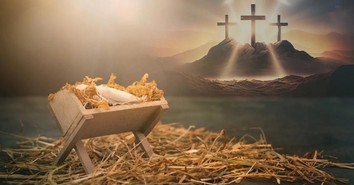7 Bible Stories Where God Used Food to Reveal His Love
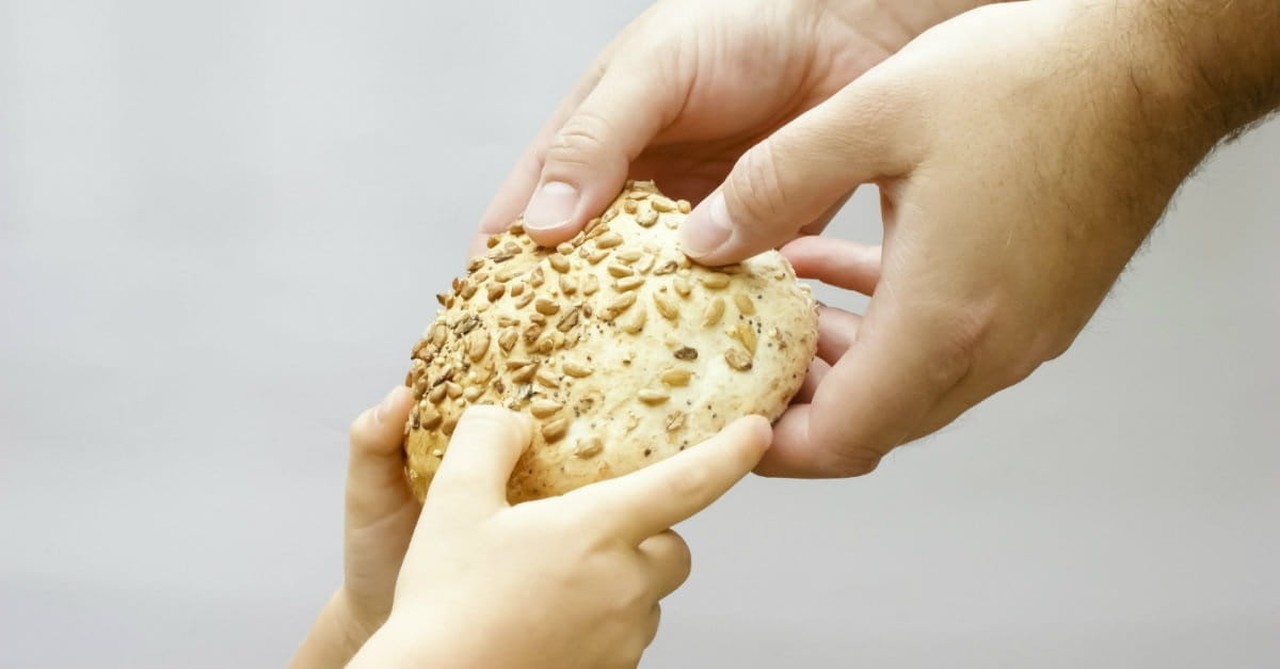
Food is more than just something we eat. In the Bible, God often used food to teach important spiritual lessons and show loving care for his people. Here are 7 powerful Bible stories where God used food to reveal his love.
1. God’s promise of abundance in the Promised Land (Deuteronomy 8)
Before the Israelites entered the Promised Land, God gave them a detailed description of what was waiting for them. Deuteronomy 8:8-9 mentions lots of food there: “a land with wheat and barley, vines and fig trees, pomegranates, olive oil and honey; a land where bread will not be scarce and you will lack nothing…”. The abundance of food represented a complete change from the harsh conditions of slavery in Egypt and their struggles of wandering in the wilderness.
God’s description of the land was meant to build trust. He wanted the Israelites to know that he wasn’t leading them into the unknown just for the sake of it. God had a plan for their good. The richness of the land symbolized God’s faithful promise to care for them, to give them rest, and to settle them in a place where they could thrive. By giving his people a land full of such good food, God was showing that he valued their well-being. This promise also pointed the Israelites to God as their ultimate provider.
God, our loving Heavenly Father, wants all of us to enjoy his blessings and remember that all good gifts come from him. God is glad to bless us abundantly with all we need and whatever else is good for us. In response, we should express gratitude to God for who he is and what he does for us.
In Deuteronomy 8:10-11, the Bible warns: “When you have eaten and are satisfied, praise the Lord your God for the good land he has given you. Be careful that you do not forget the Lord your God…”. We need to remember that every blessing is a gift from our loving God, who is worthy of our praise and wants to enjoy close relationships with us.
Photo Credit: Thinkstock/EwaPix
2. Manna and Quail in the Wilderness (Exodus 16)
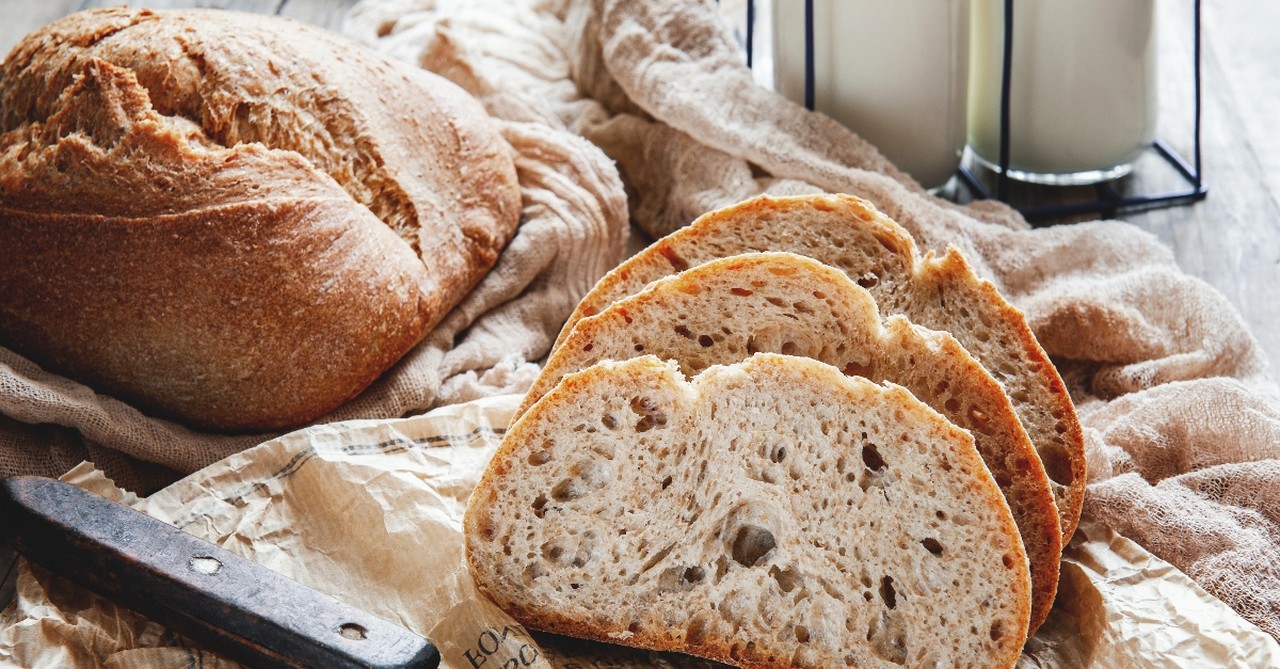
2. Manna and Quail in the Wilderness (Exodus 16)
SLIDE 1 OF 5
After escaping slavery in Egypt, the Israelites faced a new challenge: survival in the desert. They quickly began to complain about their hunger, even telling their leaders, Moses and Aaron, in verse 3: “If only we had died by the LORD’s hand in Egypt! There we sat around pots of meat and ate all the food we wanted, but you have brought us out into this desert to starve this entire assembly to death.” In response, God didn’t scold them harshly. Instead, God showed his love by providing food in a miraculous way.
Verse 12 records God's words to Moses: “I have heard the grumbling of the Israelites. Tell them, ‘At twilight you will eat meat, and in the morning you will be filled with bread. Then you will know that I am the LORD your God.’” Each morning, a mysterious bread they called “manna” (which verse 15 says means “What is it?”) appeared on the ground for them to eat. Verse 13 describes the manna: “It was white like coriander seed and tasted like wafers made with honey.” In the evenings, quail came to the camp for the Israelites to eat as meat.
This daily provision was a test of trust. God instructed them to collect only what they needed for each day (except before the Sabbath). They taught them to rely on God day by day, instead of storing up food themselves for the future. The miracle of manna and quail lasted for 40 years, until the Israelites entered the Promised Land. An entire generation was fed every single day by God directly! God didn’t give them a stockpile of food all at once. He gave them only what they needed, when they needed it – just like he promises to do for us.
This story shows us that even when we feel lost or unsure how our needs will be met, we can trust our good God to provide for us. God’s love meets us in our need, and God will faithfully provide everything we need each day because of his great love for us.
Photo Credit: ©iStock/Getty Images Plus/Oxana Medvedeva
3. Daniel and His Friends’ Diet (Daniel 1)
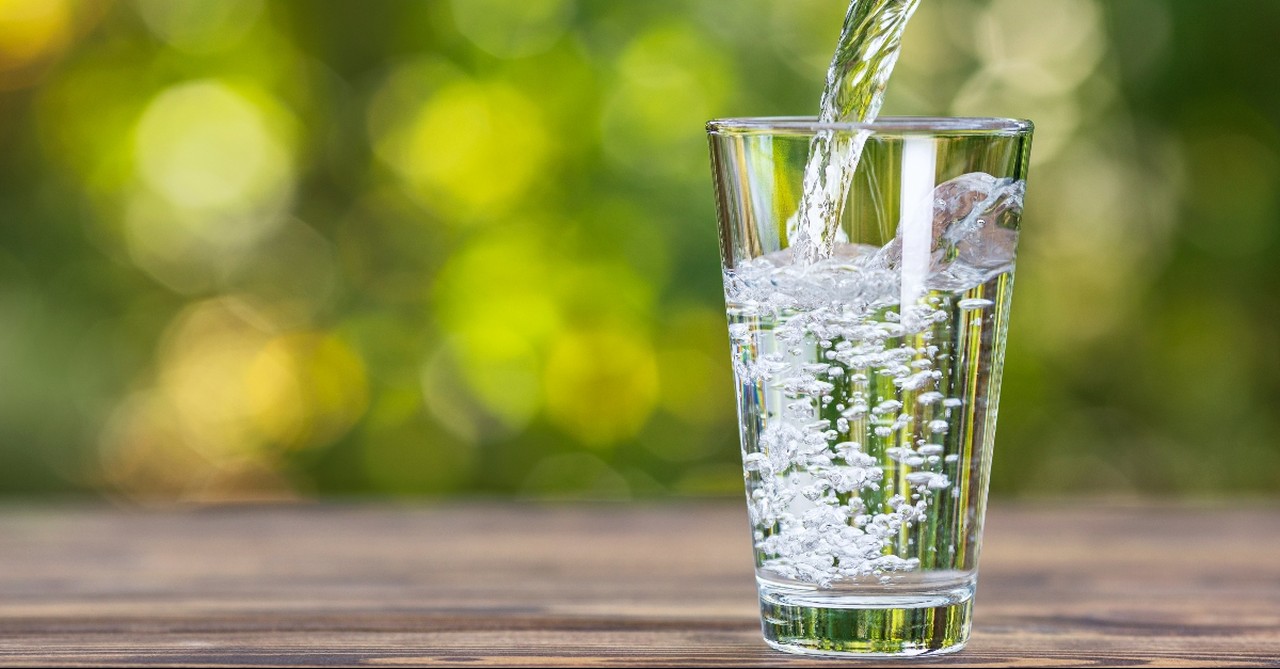
3. Daniel and His Friends’ Diet (Daniel 1)
SLIDE 2 OF 5
When Daniel and his friends Hananiah, Mishael, and Azariah were taken to Babylon as prisoners, they were chosen to be trained in the king’s court. Part of their training included eating the king’s rich food and wine. However, Daniel made a courageous decision. He resolved not to defile himself with the royal food, which may have been offered to idols or may not have met God’s dietary laws. Instead, Daniel asked in verses 12-13: “Please test your servants for ten days: Give us nothing but vegetables to eat and water to drink. Then compare our appearance with that of the young men who eat the royal food, and treat your servants in accordance with what you see.”
Daniel’s request was risky. The king’s official was worried that Daniel and his friends would look worse than the others and that he would be punished. But at the end of the 10 days, Daniel and his friends looked healthier and better nourished than the others. God had blessed their faithfulness. This story is a powerful example of how trying to be holy can bring blessings into our lives. God used food not only to feed Daniel and his friends physically, but also to bless them spiritually. God later honored their obedience by giving Daniel and his friends spiritual wisdom beyond what others had (verse 17).
This story teaches us that we can trust God with every part of our lives, even when we’re in unfamiliar or challenging situations. Choosing to be faithful to God in every way – including how we eat – can open doors for us to experience God’s loving care in powerful ways.
Photo Credit: ©iStock/Getty Images Plus/Alter_photo
4. Jesus Feeds the 5,000 (Matthew 14:13-21, Mark 6:30-44, Luke 9:10-17, John 6:1-14)
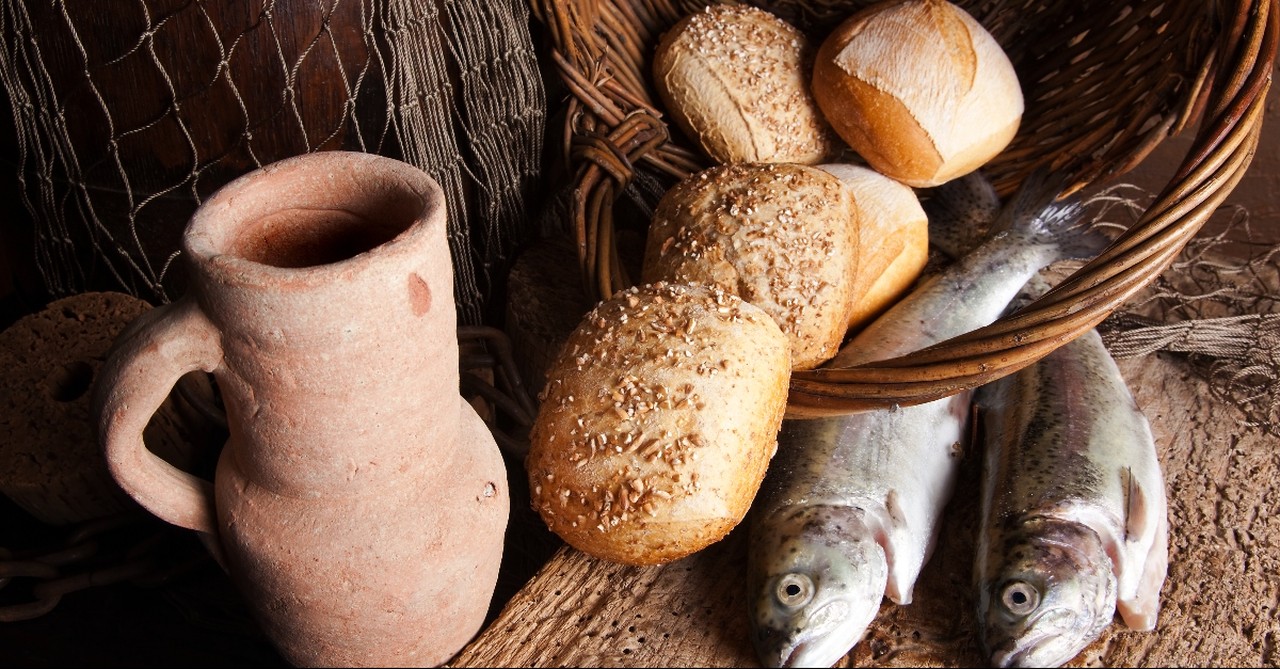
4. Jesus Feeds the 5,000 (Matthew 14:13-21, Mark 6:30-44, Luke 9:10-17, John 6:1-14)
SLIDE 3 OF 5
The time when Jesus fed more than 5,000 people is one of the most well-known miracles in the Gospels. A large crowd had followed Jesus to a remote place to hear his teachings and pursue the healing they needed. As evening approached, the disciples wanted to send the people away to find food. But Jesus had a different plan. His great love for the people moved him to perform a miracle to feed them.
With only five loaves of bread and two fish, Jesus gave thanks and began to distribute the food. Amazingly, everyone there–thousands of people–ate and were satisfied. Not only did the huge crowd of people eat well, but Jesus had miraculously multiplied the food so much that there were 12 baskets of leftovers! This miracle shows us that Jesus is the compassionate, powerful Son of God who meets both our physical and our spiritual needs. Jesus can help us get our physical needs met, but he also satisfies our spiritual hunger for meaning, purpose, and connection with God.
This story encourages us to bring whatever we have to Jesus and trust him to multiply it for us. Just like Jesus multiplied a small lunch into a feast, he can take our offerings of time, energy, talents, and money and use them to put love into action in ways that bless people. We serve a God of abundance, who sees our needs and meets them with wonderful grace.
5. Jesus feeds the 4,000 (Matthew 15:32-39, Mark 8:1-10)
Not long after feeding the 5,000, Jesus performed a similar miracle for another large crowd. This time, about 4,000 people had been with Jesus for three days and had nothing left to eat. Jesus told his disciples that he had compassion for the crowd and didn’t want to send them away hungry. With seven loaves of bread and a few small fish, Jesus again gave thanks and broke the food. Everyone ate and was satisfied, and there were seven baskets of leftovers!
Although this event is similar to the earlier miracle when Jesus fed the 5,000, this miracle took place in a mostly Gentile region, which shows that Jesus’ care extended beyond the Jewish people to all people. God lovingly cares for everyone, regardless of people’s backgrounds. The repetition of this miracle reminds us that God’s power is unlimited. He can provide whatever we need, again and again. No matter when we call on God, he is ready to provide for us. We can expect the best from God in all situations.
Photo Credit: iStock/Getty Images Plus/Studio-Annika
6. The Last Supper (Matthew 26:26-29, Mark 14:22-25, Luke 22:14-20)
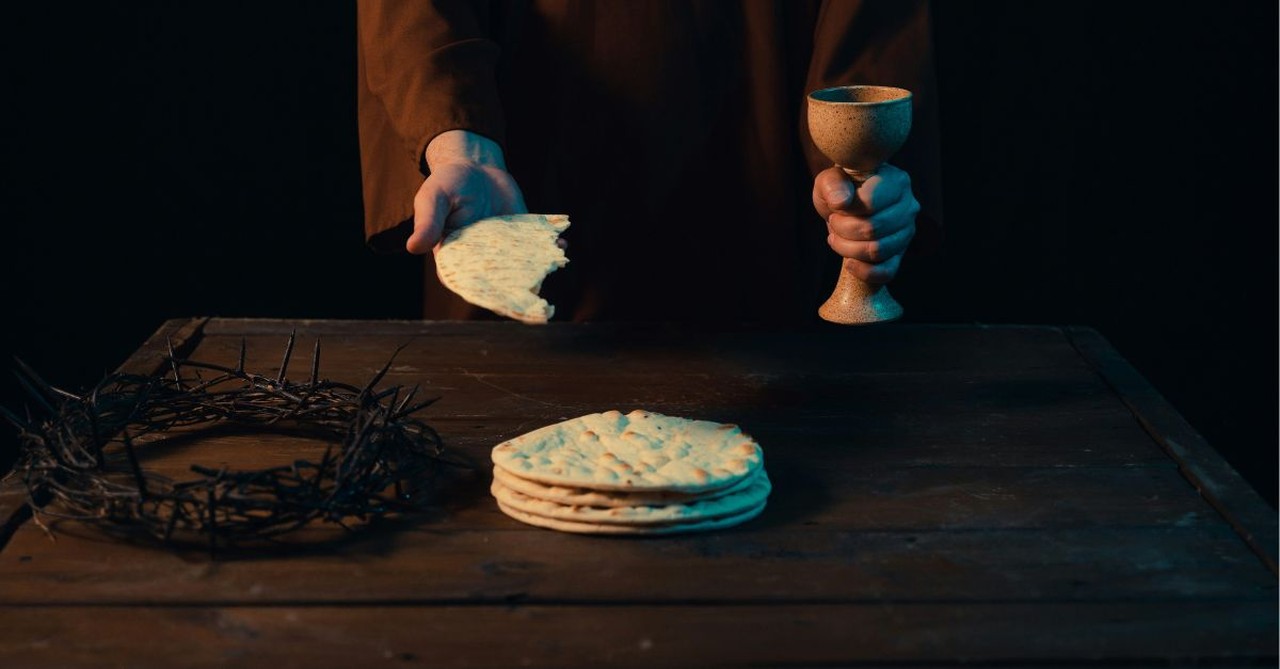
6. The Last Supper (Matthew 26:26-29, Mark 14:22-25, Luke 22:14-20)
SLIDE 4 OF 5
The Last Supper was the final meal Jesus shared with his disciples before going to the cross. During this meal, Jesus took bread, gave thanks, broke it, and gave it to them, saying it was his body. Then Jesus took a cup of wine and said it was his blood, poured out for the forgiveness of sins. With this simple meal, Jesus created a powerful symbol of his ultimate sacrifice for humanity’s sins on the cross.
This farewell dinner was the beginning of a new covenant between God and his people. Through his upcoming death and resurrection, Jesus would make a way for people to be forgiven and brought into healthy relationships with God. The bread and wine were visible reminders of this great gift. Today, Christians around the world continue to share this meal, which we call Communion, the Eucharist, or the Lord’s Supper. Each time we eat the bread and drink the cup, we remember Jesus’ loving sacrifice to save us from our sins and connect us to God.
Through the Last Supper, God used food to reveal his love for us in the most powerful way possible – by having food serve as regular reminders of our salvation! Through our relationships with Jesus, we’re invited to sit at God’s table in heaven forever as his beloved children.
Photo Credit: ©Unsplash/ Rey Proenza
7. Jesus’ breakfast with his disciples after his resurrection (John 21)
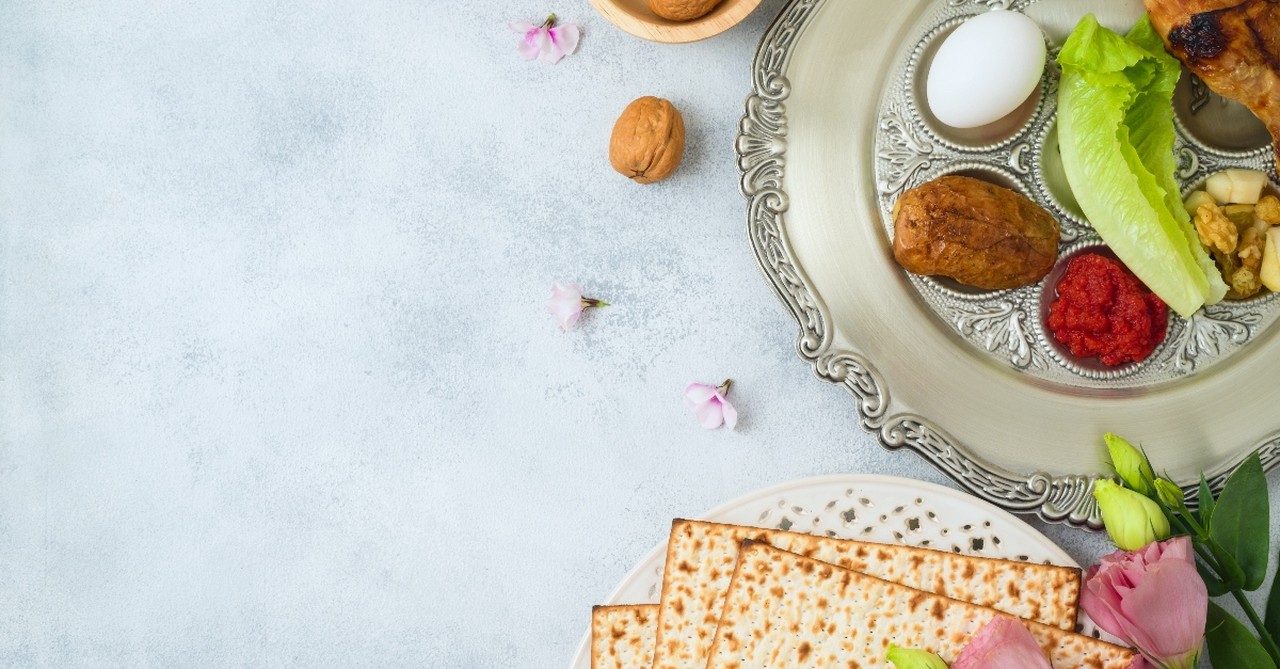
7. Jesus’ breakfast with his disciples after his resurrection (John 21)
SLIDE 5 OF 5
After Jesus rose from the dead, he appeared to his disciples and other people numerous times. One time Jesus made breakfast for his disciples by the Sea of Galilee. The disciples had been fishing all night without success. At dawn, Jesus stood on the shore. The disciples didn’t recognize Jesus at first. He told them to cast their net on the right side of the boat, and they caught a huge number of fish. When they came to shore, they found that Jesus had already prepared a charcoal fire with fish and bread. Then, Jesus invited them: “Come and have breakfast.” (verse 12).
This simple breakfast showed that Jesus was still their friend and their Lord – even after dying and coming back to life. This meal also brought healing and restoration. Jesus restored Peter, who had denied Jesus three times, during this breakfast. Sharing a meal together showed Jesus’ forgiveness and desire to have an ongoing relationship with Peter and all his disciples. This story shows us that Jesus still wants to be close to us even after we fail or fall away. Jesus’s breakfast on the beach reveals that he always loves us and gives us grace and mercy.
The Bible features lots of examples of how God has used meals to connect with people and show us that we can trust him to meet our needs with love. These stories remind us that God still cares about every part of our lives, and that God is always ready to lovingly provide for us!
Photo Credit: ©iStock/Getty Images Plus/Maglara

Originally published August 05, 2025.




